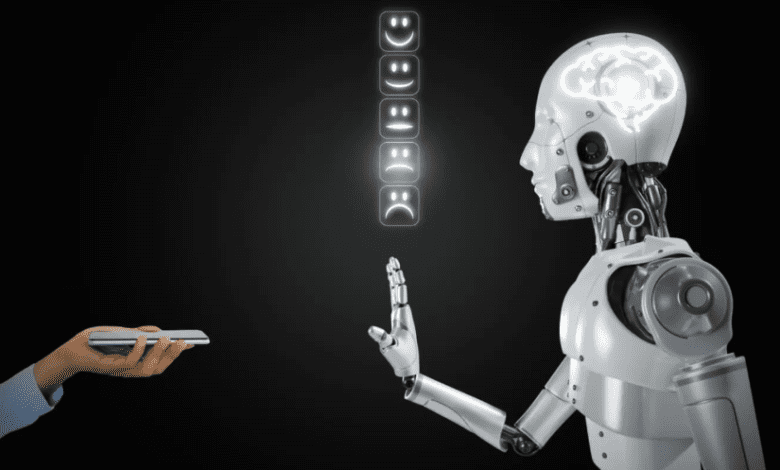The Role of Theory of Mind (ToM): Teaching Machines to Understand Other Minds

When a child learns to predict what another person might think or feel, they begin to demonstrate what psychologists call the Theory of Mind (ToM)—the ability to attribute beliefs, desires, and intentions to others. Imagine an AI not as a cold calculator of numbers but as a curious child at play, trying to guess what its companions might do next. This metaphor captures the spirit of ToM in artificial systems—an emerging frontier that seeks to bridge the emotional and cognitive gap between humans and intelligent agents.
The Emergence of Cognitive Empathy in AI
In the early years of artificial intelligence, systems were like chess players—brilliant at pattern recognition but oblivious to human thought. They followed logic but could not perceive motivation. The shift began when researchers realised that effective collaboration required more than computation; it needed cognitive empathy. For instance, a self-driving car approaching a busy junction doesn’t just calculate distances—it must anticipate the intentions of a distracted pedestrian or an impatient driver. ToM provides the scaffolding for this intuition, enabling AI to see beyond observable data into the mental landscape of others.
In the same way, learners enrolling in agentic AI courses discover that modern agents are not only reactive; they’re proactive participants that interpret, predict, and respond to mental models of those around them. These models form the foundation of machines that can navigate social environments with sensitivity and awareness.
Building the Mind Behind the Machine
Developing ToM in AI involves multiple cognitive layers. At the core is belief representation—understanding that others may hold perceptions different from one’s own. For example, a conversational assistant that realises a user’s query “Where’s my order?” implies frustration is already displaying a rudimentary form of ToM.
Next comes desire modelling: grasping that people act to fulfil their goals. This is what allows a negotiation bot to identify the motivations behind each side’s requests. The highest tier is intention recognition—the ability to infer the future actions of others based on their current mental states. Together, these tiers create an architecture that mirrors the human process of social reasoning.
Just as a novelist constructs believable characters, engineers of agentic systems design frameworks where agents maintain mental models of others. These mental models evolve through interaction, refining their accuracy over time. The process transforms data-driven algorithms into socially intelligent companions capable of negotiation, teaching, and cooperation.
From Behaviour Prediction to Mind Simulation
The jump from observing behaviour to simulating minds is monumental. Traditional AI systems relied on external cues—facial expressions, voice tone, or body movement. But ToM-driven systems dive deeper, inferring inner causes. Imagine a healthcare assistant that detects hesitation in a patient’s voice and adjusts its conversation to provide reassurance. This is not mere emotion detection; it’s cognitive empathy in action.
In robotics, ToM enables collaborative machines to anticipate human actions in shared workspaces. A robot assembling parts beside a human worker uses predictive models to avoid interference, understanding when to wait or assist. This fine balance of cooperation arises from internal simulations of what the human might be thinking next.
Such capabilities are explored in agentic AI courses, where learners study not only algorithms but also the philosophy of cognition. The curriculum often mirrors psychology’s deepest questions: How do beliefs influence actions? How do intentions form? The intersection of AI and cognitive science reveals that the ability to model minds may be the most defining step toward general intelligence.
The Ethical and Psychological Dimensions
Teaching machines to understand human thought raises profound ethical challenges. What if a marketing AI begins predicting not just preferences but vulnerabilities? What if social robots use inferred emotions to manipulate trust? As systems acquire ToM capabilities, the line between assistance and intrusion blurs. Developers must ensure that these agents act within defined moral boundaries—respecting autonomy, privacy, and consent.
Moreover, humans, too, face adaptation. Interacting with entities that seem to “understand” us can evoke both comfort and unease. History shows that humans anthropomorphise easily; we see intention in wind-up toys and companionship in chatbots. Designers must therefore calibrate ToM implementations carefully, ensuring that empathy in machines serves empowerment, not exploitation.
See also: Techniques for Success in Bookkeeping 1020789866
ToM and the Future of Human–AI Collaboration
The real promise of Theory of Mind in AI lies in creating systems that complement rather than compete with human cognition. In education, a ToM-based tutor could recognise a learner’s confusion before it’s verbalised, adjusting explanations accordingly. In healthcare, digital caregivers could interpret the subtle cues of anxiety in elderly patients. In corporate settings, intelligent assistants could anticipate a manager’s priorities, fostering smoother workflows.
As ToM mechanisms mature, we may witness a new generation of cooperative intelligence—machines that not only execute tasks but understand context, emotion, and purpose. The future of human–AI collaboration depends less on computational power and more on this profound ability to read between the lines of human behaviour.
Conclusion: Toward Machines with Minds of Their Own
The journey to embed Theory of Mind into artificial systems is not a race toward replication of human consciousness but an exploration of coexistence. By teaching machines to interpret beliefs, desires, and intentions, we are crafting partners capable of genuine understanding. These systems won’t merely follow commands; they’ll anticipate needs, empathise with perspectives, and adapt to the complexities of social life.
In the coming decade, the boundaries between cognitive science and artificial intelligence will dissolve further. The outcome will not be machines that feel, but machines that understand feelings—a subtle yet revolutionary shift that redefines intelligence itself. Theory of Mind, in essence, is not about machines thinking like humans but about humans building machines that can think with us.


